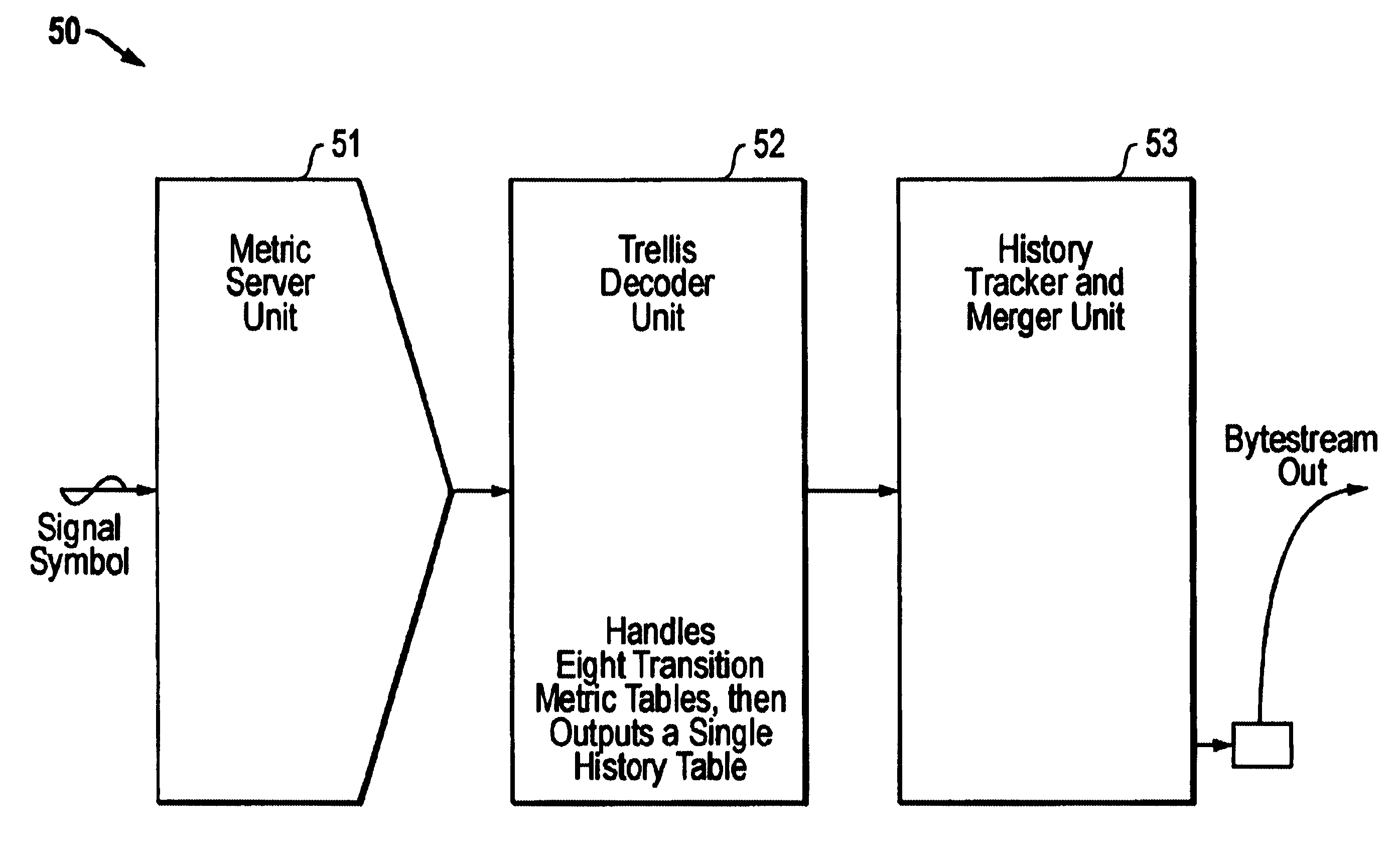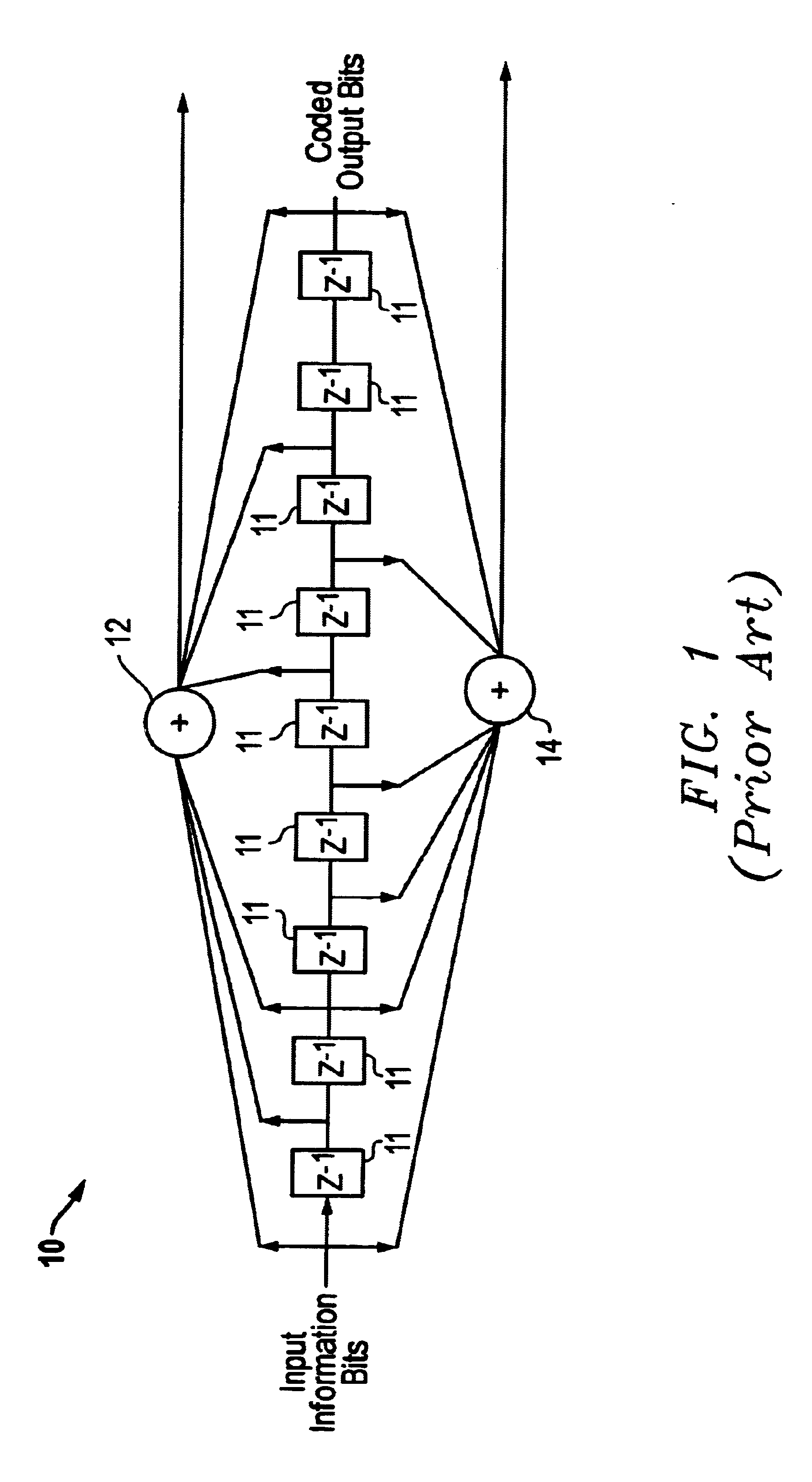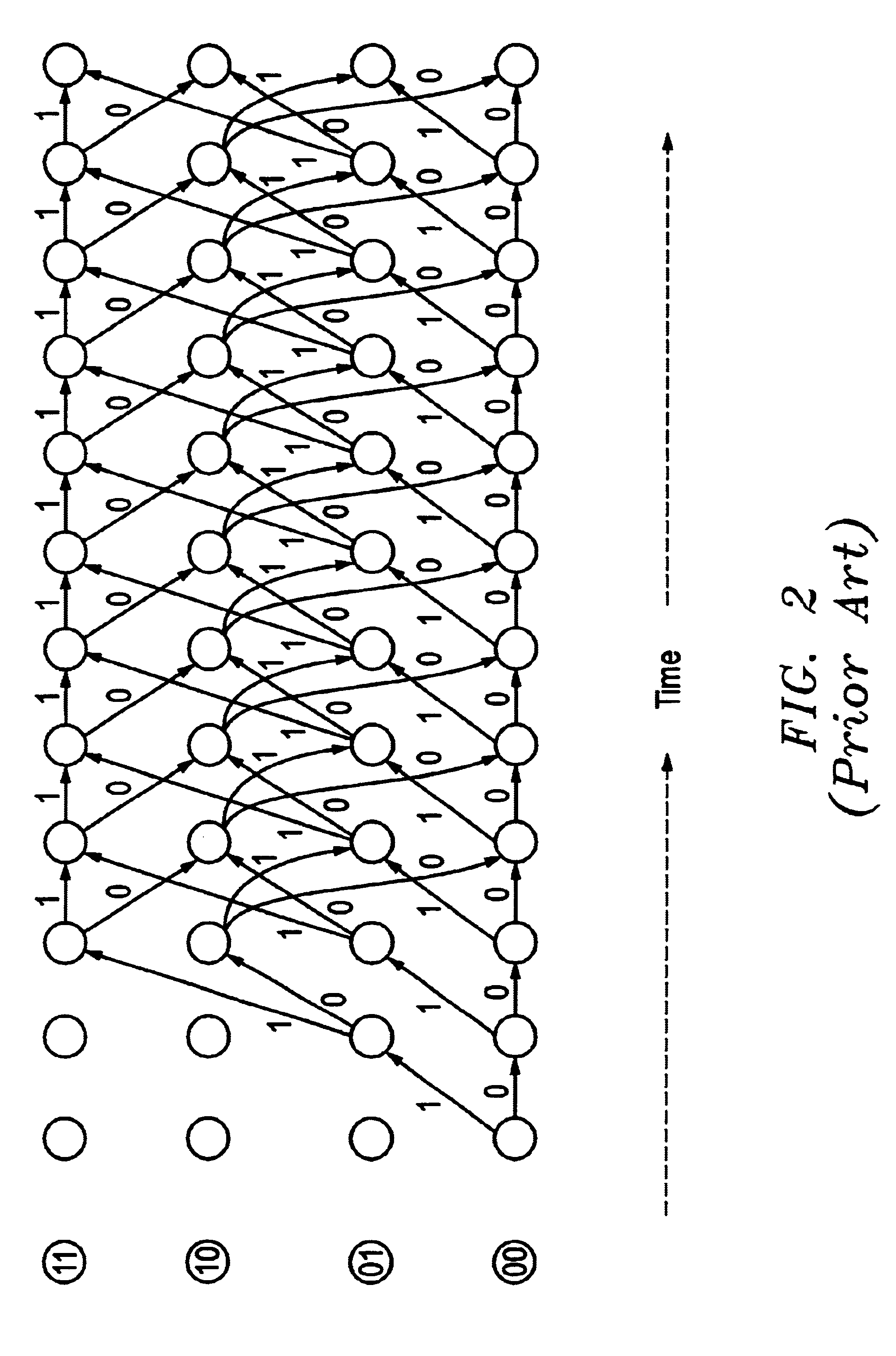Digital signal processor decoding of convolutionally encoded symbols
a digital signal processor and convolutional encoder technology, applied in the field of communication techniques, can solve problems such as noise, significant amount of memory needed to specify each state, and noise between the two signals
- Summary
- Abstract
- Description
- Claims
- Application Information
AI Technical Summary
Problems solved by technology
Method used
Image
Examples
first embodiment
In either embodiment, the paths through the other states are handled analogously. Likewise, in a decoder with more states (e.g., the IS-95 decoder with 256 states), the operation is exactly the same for each state. As will be clear to those skilled in the art of Viterbi decoders, it is possible to conserve memory in the trellis decoder unit and simplify computations by operating on pairs of states together so as to update the path metrics, history and (in the case of the first embodiment) index values for the two states at the same time, keeping the same memory locations. This implies that the data associated with a given state moves from one location to another from one time interval to another; however, at the end of (constraint_length-1) steps all of the data are back to their original locations. This observation considerably simplifies the production of the tables that are output to the history tracker unit.
Each time a table of metrics arrives, the trellis decode unit must updat...
embodiment 1
H(lo).rarw.H(hi) and in embodiment 1, I(lo).rarw.I(hi)
(2) PM(lo).rarw.PM(lo)+TR(lo,lo)
PM(hi).rarw.PM(lo)+TR(lo,hi)
H(hi).rarw.H(lo) and in embodiment 1, H(hi).rarw.H(lo)
(3) PM(lo).rarw.PM(hi)+TR(hi,lo)
PM(hi).rarw.PM(lo)+TR(lo,hi)
H(lo).rarw.H(hi) and in embodiment 1, I(lo).rarw.I(hi)
H(hi).rarw.H(lo) and in embodiment 1, H(hi)+H(lo)
The trellis decoder unit 52 maintains only a single copy of the path metric, index and history for each state, though these values change with time. Using the four state decoder as an example, after updating the path metrics, indexes and history data at time t.sub.2n+4, the trellis decoder passes a table of data to the history tracker and merger unit 53 which will enable the unit to compute, for the paths that survive at time t.sub.2n+4, the state S.sub.2n from the state S.sub.2n+2. To describe the computation of this output data it is useful to simplify our notation. At time t.sub.2n+4, the only information remaining in the trellis decoder relates to time t...
second embodiment
The second embodiment, the operation of which was described with respect to FIGS. 15, 16, 17A, 17B and 17C, provides an improved interface between the processor unit and the peripheral unit. In particular, this embodiment provides a trail compression that results in a simplified decoding procedure.
PUM
 Login to View More
Login to View More Abstract
Description
Claims
Application Information
 Login to View More
Login to View More - R&D
- Intellectual Property
- Life Sciences
- Materials
- Tech Scout
- Unparalleled Data Quality
- Higher Quality Content
- 60% Fewer Hallucinations
Browse by: Latest US Patents, China's latest patents, Technical Efficacy Thesaurus, Application Domain, Technology Topic, Popular Technical Reports.
© 2025 PatSnap. All rights reserved.Legal|Privacy policy|Modern Slavery Act Transparency Statement|Sitemap|About US| Contact US: help@patsnap.com



